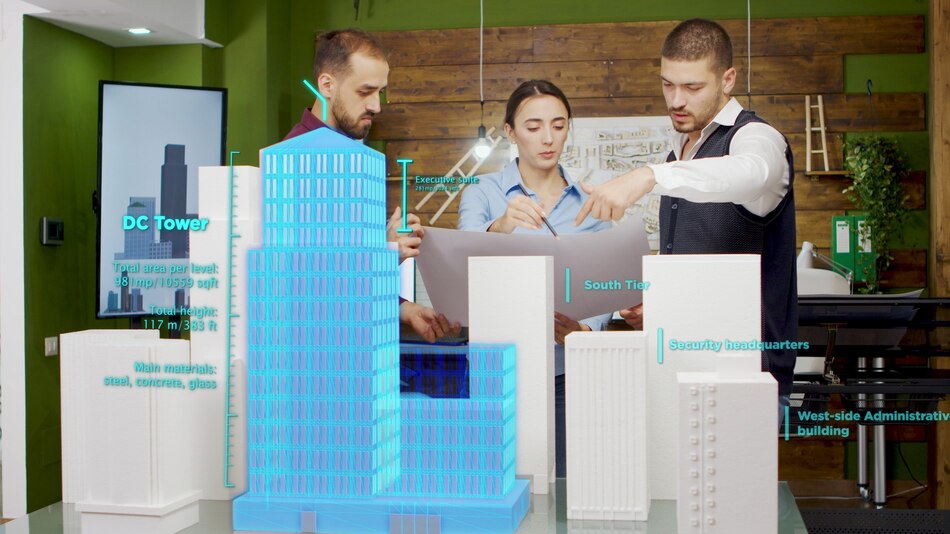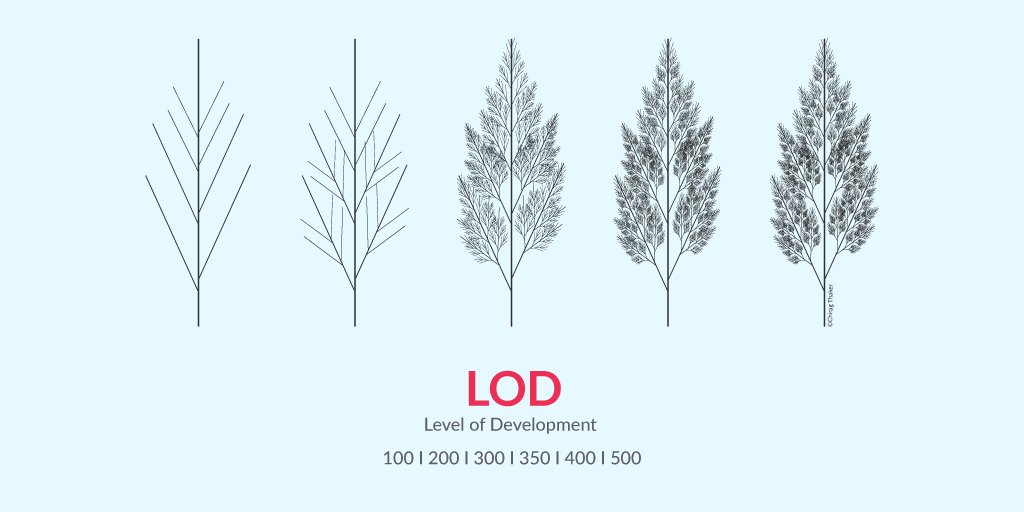Introduction:
In the realm of architecture, engineering, and construction (AEC), Building Information Modeling (BIM) has emerged as a game-changer, revolutionizing the way projects are designed, constructed, and managed. Central to the BIM process is the concept of Levels of Development (LOD), which defines the level of detail and accuracy of information within a BIM model at different stages of the project lifecycle. In this blog, we embark on a journey to unravel the intricacies of BIM Levels of Development, exploring their definition, evolution, significance, and practical applications in the AEC industry.
1. Defining BIM Levels of Development (LOD):

a. Overview:
- BIM Levels of Development (LOD) categorize the level of detail and reliability of information within a BIM model at various stages of a project. The LOD framework provides a standardized way to communicate the maturity of a BIM model and the associated level of detail.
b. Components of LOD:
- LOD typically consists of a numerical scale ranging from LOD 100 to LOD 500, with each level representing an increasing level of detail and accuracy. At LOD 100, the model may represent conceptual design, while at LOD 500, it may include precise geometric and non-geometric information.
2. Evolution of BIM Levels of Development:

a. Historical Context:
- The concept of LOD originated in the early days of BIM adoption as a way to define and communicate the level of detail in BIM models. Over time, the LOD framework has evolved to accommodate the changing needs and requirements of the AEC industry.
b. Standardization Efforts:
- Various organizations and industry groups have contributed to the standardization of LOD definitions and guidelines. This includes efforts by buildingSMART International, the American Institute of Architects (AIA), and the Construction Specifications Institute (CSI).
3. Significance of BIM Levels of Development:
a. Communication and Collaboration:
- LOD provides a common language for communication and collaboration among project stakeholders, ensuring that everyone has a clear understanding of the level of detail in the BIM model and the associated expectations.
b. Risk Management:
- By defining the level of detail and accuracy at each stage of the project, LOD helps mitigate risks associated with incomplete or inaccurate information. This ensures that decisions are based on reliable data and reduces the likelihood of errors and omissions.
c. Project Planning and Execution:
- LOD serves as a roadmap for project planning and execution, guiding stakeholders through the progression of the BIM model from conceptual design to as-built documentation. This helps streamline workflows, optimize resource allocation, and improve project outcomes.
4. Practical Applications of BIM Levels of Development:

a. Design Development:
- In the early stages of design development, LOD helps architects and designers communicate their vision and ideas effectively. As the design evolves, LOD guides the refinement of the BIM model to incorporate additional detail and information.
b. Construction Documentation:
- During the construction documentation phase, LOD ensures that the BIM model contains the necessary level of detail for contractors to accurately interpret and implement the design. This includes precise dimensions, quantities, and specifications.
c. Facility Management:
- After construction is complete, LOD supports facility management activities by providing stakeholders with access to comprehensive information about building components, systems, and maintenance requirements. This helps optimize facility operations and prolong the lifespan of assets.
5. Challenges and Considerations:
a. Interoperability and Data Exchange:
- One of the key challenges of LOD implementation is interoperability and data exchange between different software platforms and systems. Standardization of data formats and protocols is essential for seamless collaboration.
b. Training and Education:
- Implementing LOD requires specialized skills and training for project stakeholders, including architects, engineers, contractors, and facility managers. Continuous education and professional development are crucial for effective use of the LOD framework.
6. Future Outlook:
a. Technological Advancements:
- As technology continues to evolve, we can expect further advancements in BIM tools and methodologies, enabling more seamless integration of LOD into project workflows. This includes the use of artificial intelligence, machine learning, and automation to enhance the accuracy and efficiency of LOD implementation.
b. Industry Adoption:
- With growing awareness of the benefits of LOD, we anticipate increased adoption across the AEC industry, particularly in large-scale construction projects and complex infrastructure developments. Standardization efforts and industry-wide collaboration will play a key role in driving widespread adoption of LOD.
Conclusion:
Building Information Modeling (BIM) Levels of Development (LOD) provide a standardized framework for defining the level of detail and accuracy of information within BIM models at different stages of a project. By leveraging the LOD framework, stakeholders can effectively communicate, collaborate, and manage project information, leading to improved project outcomes and enhanced efficiency in the architecture, engineering, and construction (AEC) industry. As technology continues to evolve and industry practices evolve, LOD will remain a critical tool for driving innovation and advancing the state of the art in project delivery.
Frequently Asked Questions (FAQs) – BIM Levels of Development (LOD):
1. What is the purpose of BIM Levels of Development (LOD)?
- BIM Levels of Development (LOD) provide a standardized framework for defining the level of detail and accuracy of information within BIM models at different stages of a project. It helps stakeholders understand the maturity of the BIM model and the associated expectations.
2. How are BIM Levels of Development categorized?
- BIM Levels of Development are typically categorized using a numerical scale ranging from LOD 100 to LOD 500. Each level represents an increasing level of detail and accuracy, with LOD 100 representing conceptual design and LOD 500 representing precise geometric and non-geometric information.
3. Who uses BIM Levels of Development in the AEC industry?
- BIM Levels of Development are used by various stakeholders in the architecture, engineering, and construction (AEC) industry, including architects, engineers, contractors, and facility managers. It serves as a common language for communication and collaboration throughout the project lifecycle.
4. How does BIM Levels of Development impact project planning and execution?
- BIM Levels of Development serve as a roadmap for project planning and execution, guiding stakeholders through the progression of the BIM model from conceptual design to as-built documentation. It helps streamline workflows, optimize resource allocation, and improve project outcomes.
5. What are some common challenges associated with implementing BIM Levels of Development?
- Some common challenges include interoperability and data exchange between different software platforms, as well as the need for specialized skills and training for project stakeholders. Standardization efforts and continuous education are essential for effective use of the LOD framework.
6. How does BIM Levels of Development support facility management activities?
- BIM Levels of Development support facility management activities by providing stakeholders with access to comprehensive information about building components, systems, and maintenance requirements. This helps optimize facility operations and prolong the lifespan of assets.








